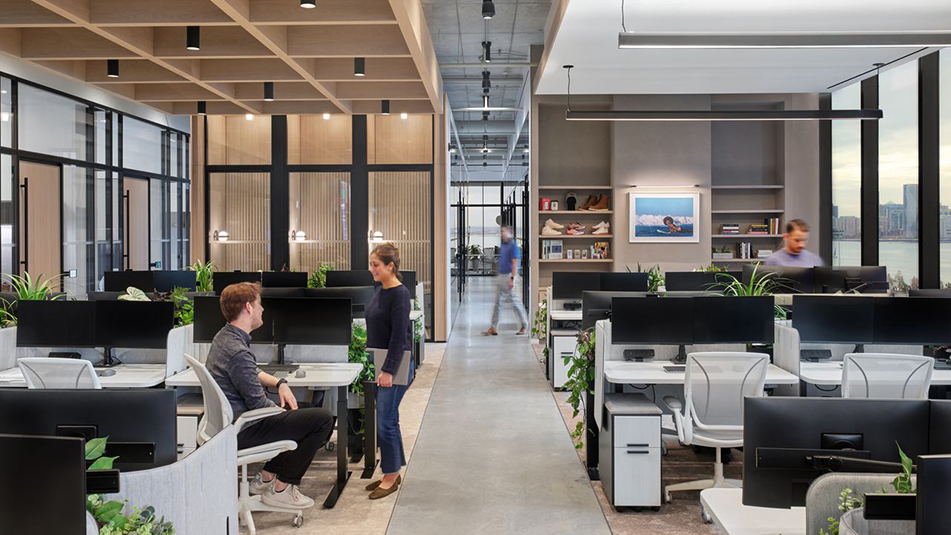Thinking Beyond the Huge Conference Room
Last month, Jack shared insight into how to weigh the pros and cons of a new office layout. I’d like to build on his great thoughts and go into more detail on a few topics.
In a fast-paced business environment where new ideas and concepts surface daily, it is important for businesses to pause and think: “What’s best for us?”
One of the most pivotal aspects of your new office layout is the allocation of meeting spaces. How many will you need? How big do they need to be? What technologies should be present?
This last question – technology – is really the main driver for many of these emerging meeting trends and changes. Communication technologies like video conferencing, Skype for business and VOIP applications allow more people to work from home and on-the-go. Consequently, many of today’s meetings are a hybrid; some people are there physically, while others dial or video chat in. The result? Fewer people sitting around the table, which makes the need for smaller meeting spaces and more of them greater. For instance, having two or three people sitting at a 12-person conference table isn’t the most efficient use of square footage.
Technology, coupled with shrinking personal/private workspaces, is encouraging employees to seek alternate areas to work and meet. The result has been a variety of different meeting spaces. One or more than one could be the right choice for your company:
- Collaborative team rooms
- Game rooms
- Phone or enclave rooms
- Kitchen/cafés that double as large conference areas when needed
- Sitting and standing options
- Impromptu meetings vs. reserved/scheduled meetings
- Formal vs. informal
- Soft seating vs. typical task chair seating
- Modular/movable table layouts
With such a diverse assortment of meeting places, it no longer makes sense, in most applications, to centralize the technology in one or a few large conference rooms. Smaller meeting areas are now a great spaces for video chats and presentation equipment that was previously relegated to the large, central conference room.
It is important for businesses to identify how employees work – their preferred mediums of communication, technology requirements and privacy needs. Are they in the office or on-the-go? Getting a strong grasp on these aspects of your business will give you a road map for programming meeting spaces. Figuring out the number and size of your meeting spaces will allow you to not only make the most of your square footage, but also maximize employee efficiency and productivity.


